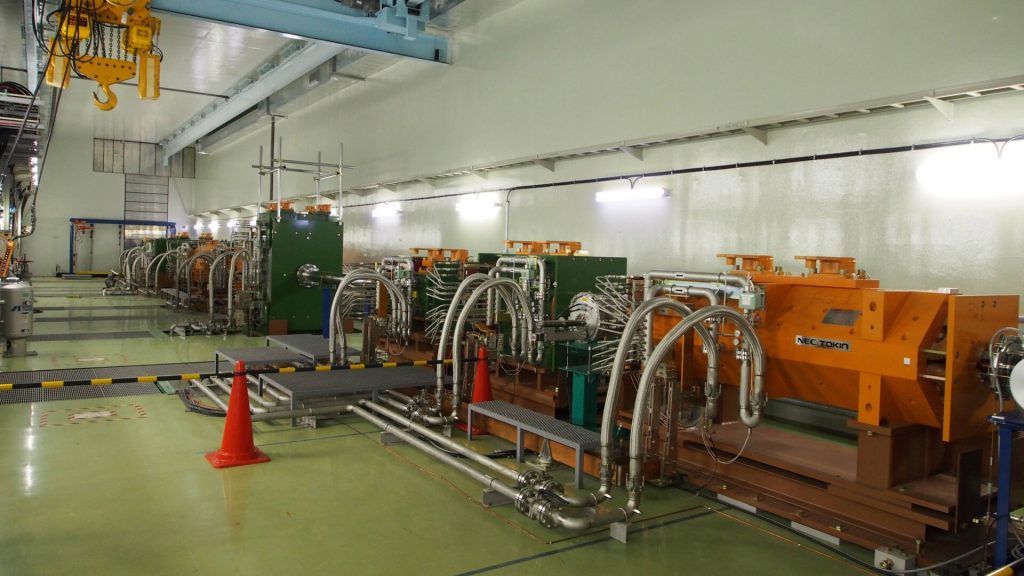Around seven years ago, workers began removing 800,000 tons of rock from an old gold mine near Lead, South Dakota. They made three big caves underground, each about as long as two football fields and nearly tall enough for a seven-story building.
This project, called DUNE (Deep Underground Neutrino Experiment), is run by scientists at Fermilab, which is part of the US Department of Energy. It’s expected to cost at least $3 billion.
Neutrinos: Unveiling Universe’s Hidden Secrets
“You can live a happy life without knowing much about neutrinos, but they’re one of the real keys to the way our universe developed after the Big Bang, and why it works the way it does,” Edward Blucher, one of DUNE’s two co-leaders and University of Chicago physicist said back in 2017.

He added that scientists guess that the most believable explanation is that neutrinos played a major role in what happened in the formative years of our universe. He also mentioned that the aim of Project DUNE is to find some answers about what really happened.
Massive Liquid Argon Caves
The plan is to fill each cave with 17,500 tons of liquid argon so that Fermilab scientists can find hard-to-detect particles called neutrinos, also known as “ghost particles.”

Neutrinos are super tiny particles that are all around us, passing through our bodies without us even noticing. They’re made by the sun, created in exploding stars. Yes, even bananas give off neutrinos. Physicist Mary Bishai, a spokesperson for DUNE, says that if you hold your hand up, about 10 billion neutrinos from the sun pass through it every second.
Universe’s Ghostly Secrets
Neutrinos are called “ghost particles” because they don’t have an electric charge, so they hardly ever bump into anything. This also makes them really hard to study.

But scientists keep trying because neutrinos might help us figure out big mysteries of the universe. For example, the events that happened right after the Big Bang or how black holes are born.
Like Hunting For Needles
Studying a particle that doesn’t give off radiation and is lighter than an electron is really hard. “It’s like finding needles in a haystack,” Bishai said.

Fermilab scientists want to study neutrinos in more detail than ever before with DUNE. That’s why DUNE will have the biggest neutrino detectors ever built. The experiment starts with powerful particle accelerators at Fermilab near Chicago.
Epic Underground Journey
These accelerators will shoot a strong beam of neutrinos through a detector at Fermilab and then underground for 800 miles to detectors at the South Dakota Sanford Underground Research Facility.

Along the way, the neutrinos can change between three types, kind of like a cat turning into a jaguar and then a tiger before going back to being a cat. Tracking these changes over such a long distance will help scientists understand them better.
Finding Answers To Age-Long Questions
Doing this underground, a mile below the surface, protects the delicate particles from cosmic rays that could mess up the data.

Scientists want to answer three big questions with DUNE: why there’s more matter than antimatter in the universe, what happens when a star collapses, and do protons decay? What sounds like a silly question is actually one that has left physicists confused since the late 1920s when Georges Lemaitre proposed the Big Bang theory.
Cracking The Mystery Of Antimatter
Physicists have long believed that the Big Bang produced equal amounts of matter and an identical but oppositely charged substance known as antimatter. But if this belief is correct, why is antimatter almost non-existent in the universe? Yet, matter is everywhere and it makes up everything around us.

From stars and planets to the atoms in our bodies. DUNE scientists believe they can take a big step towards finding answers to this question. How? By proving for the first time that neutrinos and their antimatter counterparts, antineutrinos, behave differently.
Matter Vs Antimatter
“Right after the Big Bang, there was about the same amount of matter and antimatter,” Bishai said. But now, it seems like almost everything in the universe is made of matter. “Why did we end up with a universe full of matter, not antimatter?” she added.

DUNE’s beam will make both neutrinos and antineutrinos. Studying how they change might help scientists understand what happened to all the antimatter. In 1987, astronomers saw a bright supernova explode closer to Earth than any had in 400 years.
Catching Cosmic Clues
Back then, they could only detect a few dozen neutrinos with the detectors they had. There’s a 40% chance that another nearby star will explode in the next ten years, according to Bishai. Fermilab hopes that one of its detectors in South Dakota will be ready by then.

With such a big detector, scientists could learn more about how black holes and neutron stars form. Even though scientists haven’t seen protons decay yet, they think it should happen based on theory.
Hunting Proton Decay
Protons are tiny, positively charged particles in the center of an atom’s nucleus. If they do decay, it could have big implications for Albert Einstein’s ideas about unifying the forces of nature into one theory.

It might take an incredibly long time, but neutrino detectors could help spot signs of proton decay if those theories are right, Bishai said.
Leading The Charge
DUNE is a big project, but it’s not the only one studying neutrinos. There are other projects around the world, like at J-PARC in Japan and CERN in Europe. The difference is DUNE’S use of argon and the long distance between its detectors.

The project has faced some challenges with budget and timelines, as reported by Scientific American in 2022. Originally, there were supposed to be four argon detectors, but they’ll start with two.
Connecting Nations
The first one might be ready by the end of 2028, Bishai said, and the second one the following year. These detectors will be in place in case a supernova happens, but the part with the beam won’t be ready until 2031.

Even with these setbacks, Bishai believes one of the project’s biggest achievements is bringing together 1,400 people from 36 countries to work together. “It’s a huge collaboration,” she said. “It’s also a huge international collaboration.”






GIPHY App Key not set. Please check settings